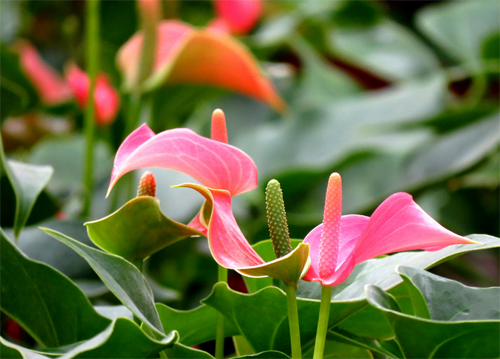Cultivation techniques of alpinia officinalis
Alpinia officinarum is a traditional Chinese medicine in China. Alpinia officinarum has a certain antibacterial effect, can inhibit blood coagulation and has analgesic effect, so it is mainly used to relieve pain. And Gaoliang ginger is also a very good ingredient and is very popular in our country. It is mainly distributed in Guangdong and Guangxi, but it also has a certain planting area in China because of the nutritional value of alpinia officinalis. So how to grow alpinia officinalis? The following editor has brought the cultivation techniques of Gaoliang ginger, let's have a look!

1. Soil preparation and fertilization
Gaoliang ginger is not suitable to grow in the soil with dry water shortage, low topography and heavy unequal stickiness in potholes, and it is not suitable for continuous cropping. Therefore, we first need to choose a sandy soil that is soft enough, permeable and fertile enough to plant. Then turn the ground to a depth of about 28 cm in winter and spring, and then apply sufficient base fertilizer, which is mainly rotten farm manure, and the amount will be controlled at about 3000 kg / mu. Then shallow hoe, fully mix the fertilizer with the soil, the depth of the base fertilizer should not exceed 20 cm, prevent the fertilizer from losing its effect, and then prepare the bed for planting.
2. Sowing seeds at the right time
Alpinia officinalis seed collection time is generally around the end of autumn every year, to choose full, disease and insect pest-free and wound-free seeds to ensure the germination power of seeds. And the storability of alpinia officinarum seeds is not high, so try to sow seeds as soon as possible, soaking seeds to accelerate germination and disinfect seeds before sowing. Then prepare the seedling bed, the method of preparation is similar to that of planting in the field, and the row spacing is controlled at about 10 cm for furrow sowing. Then spread the seeds evenly into the sowing ditch, cover the soil and cover the grass after sowing, germinate after about 3 weeks under normal management, and then transplant in time according to the growth of the seedlings.
3. Ploughing and weeding
When the seedlings are completed successfully, weeding needs to be carried out every 3 weeks or so, because the growth capacity of Gaoliang ginger seedlings is limited and the nutrition absorption is not strong, so it is necessary to prevent weeds from grabbing the growth nutrition of Gaoliang ginger. Attention should be paid to the efforts when weeding to avoid harming the roots of seedlings, affecting the absorption of nutrients in the roots and hindering the growth of alpinia officinarum. Then in winter, when the aboveground part of alpinia officinalis gradually withered, the withered part should be cut off about 6 centimeters from the ground. Cultivate the soil about 4 cm again and cover the bud head to prevent Gaoliang ginger from being threatened by freezing injury.
4. Water and fertilizer management
Alpinia officinalis has little demand for water, but it should also be watered reasonably according to the changes of soil moisture and rainy season. Pay attention to watering water to prevent excessive water from causing root rot and other diseases to affect the growth of alpinia officinarum. During the growing period of alpinia officinalis, there is a great demand for nutrition, so topdressing is needed after each weeding, and overwintering fertilizer should be applied together with soil mulching before winter to enhance the cold resistance of plants and prevent frost injury. Then after the beginning of spring, dilute dung water was applied to restore the vitality of the seedlings. Finally, before closing the ridge, plant ash and superphosphate should be mixed at the base of the plant to promote the root expansion of alpinia officinarum. With the increase of the growth years of alpinia officinarum, the times and amount of topdressing can be reduced slowly.
The above is a brief introduction to the cultivation techniques of alpinia officinarum, in which we should also pay attention to the deep cover of the soil in the trench to prevent the rhizome from rotting after the seedlings withered in winter. Then, around April of the following year, clean it again to prevent the accumulation of water in the rainy season from affecting the growth of alpinia officinalis. This is the end of today's introduction, this article is for reference only, friends who want to know more relevant information, please continue to follow us!
- Prev

What to do with the yellowing of pink palm leaves? breeding methods and matters needing attention
Pink palm is very popular, pink palm flowers are pink, is very shy, just like a lady, but pink palm is not very easy to raise, always the leaves of pink palm yellow, but also easy to raise to death, how to raise powder palm on earth? What if the pink palm leaves turn yellow?
- Next

Matters needing attention in planting Schizonepeta tenuifolia
Matters needing attention in planting Schizonepeta tenuifolia
Related
- Fuxing push coffee new agricultural production and marketing class: lack of small-scale processing plants
- Jujube rice field leisure farm deep ploughing Yilan for five years to create a space for organic food and play
- Nongyu Farm-A trial of organic papaya for brave women with advanced technology
- Four points for attention in the prevention and control of diseases and insect pests of edible fungi
- How to add nutrient solution to Edible Fungi
- Is there any good way to control edible fungus mites?
- Open Inoculation Technology of Edible Fungi
- Is there any clever way to use fertilizer for edible fungus in winter?
- What agents are used to kill the pathogens of edible fungi in the mushroom shed?
- Rapid drying of Edible Fungi

